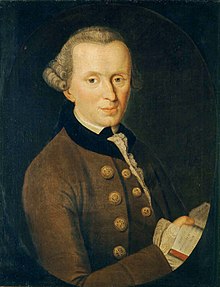
Philipp Veit was a German Romantic painter and one of the main exponents of the Nazarene movement. It is to Veit that the credit of having been the first to revive the nearly forgotten technique of fresco painting is due.

The International Motor Show Germany or International Mobility Show Germany, in German known as the Internationale Automobil-Ausstellung, is one of the world's largest mobility shows. It consists of two separate fairs, that subdivided in 1991. While the IAA MOBILITY displays passenger vehicles, motorcycles and bikes, the IAA TRANSPORTATION specializes in commercial vehicles. Before the separation, the show was held solely at the Messe Frankfurt.

Johann Paul Wallot was a German architect of Huguenot descent, best known for designing the Reichstag building in Berlin, erected between 1884 and 1894. He also built the adjacent Palace of the President of the Reichstag, finished in 1904, and the former Saxon Ständehaus state diet building of 1906 at Brühl's Terrace in Dresden.
The Gottfried Wilhelm Leibniz Prize, in short Leibniz Prize, is awarded by the German Research Foundation to "exceptional scientists and academics for their outstanding achievements in the field of research". Since 1986, up to ten prizes are awarded annually to individuals or research groups working at a research institution in Germany or at a German research institution abroad. It is considered the most important research award in Germany.
The German parliament or Reichstag that was elected in the general election of May 1928 and sat until that of September 1930 was the fourth parliament of the Weimar Republic.

Carl Friedrich von Rumohr was a German art historian, writer, draughtsman and painter, agricultural historian, connoisseur of and writer about the culinary arts, art collector and patron of artists.

The Liebig Medal was established by the Association of German Chemists in 1903 to celebrate the centenary of Justus von Liebig. Since 1946 it has been awarded by the Society of German Chemists.
The Rudolf-Diesel-Medaille is an award by the German Institute for Inventions in memory of Rudolf Diesel for inventions and the entrepreneurial and economical implications accounting to the laureate. Since 1953 the award has been presented yearly until 1969 and then irregularly every two or three years.

The German ancient noble family of Pfuel arrived in Brandenburg in the year 926 and later widened their influence to Saxony, Saxony-Anhalt, Mecklenburg, Pomerania, Württemberg, Westphalia, Eastern Europe and Sweden.

A Musen-Almanach was a kind of literary annual, popular in Germany from 1770 into the mid-19th century. They were modelled on the Almanach des Muses published in Paris from 1765.
Events from the year 1880 in Germany.

The Grand Landlodge of the Freemasons of Germany, also: Order of Freemasons is a Masonic Grand Lodge in Germany. It is one of the founding members of the United Grand Lodges of Germany and as such it is one of the five German Grand Lodges recognized as "regular" Grand Lodges by the United Grand Lodge of England (UGLE). The Grand Lodge was established in 1770 by Johann Wilhelm Kellner von Zinnendorf, a Prussian army physician. It is one of three so called Old Prussian Grand Lodges.

Friedrich Anton Hermann Schievelbein was a German sculptor.

The Equestrian statue of Frederick the Great on Unter den Linden avenue in Berlin's Mitte district commemorates King Frederick II. of Prussia. Created from 1839 to 1851 by Christian Daniel Rauch, it is a masterpiece of the Berlin school of sculpture, marking the transition from neoclassicism to realism. The bronze statue shows "The Old Fritz" dressed in military uniform, ermine coat and tricorne hat on horseback above the leading generals, statesmen, artists and scientist of his time. Walled in during World War II, it was disassembled by East Germany in 1950, reassembled in Sanssouci Park in 1963, and returned to its original location in 1980.

Bekenntnis der Professoren an den Universitäten und Hochschulen zu Adolf Hitler und dem nationalsozialistischen Staat officially translated into English as the Vow of allegiance of the Professors of the German Universities and High-Schools to Adolf Hitler and the National Socialistic State was a document presented on 11 November 1933 at the Albert Hall in Leipzig. It had statements in German, English, Italian, and Spanish by selected German academics and included an appendix of signatories. The purge to remove academics and civil servants with Jewish ancestry began with a law being passed on 7 April 1933. This document was signed by those that remained in support of Nazi Germany.
Karl Friedrich Wilhelm Wander was a German pedagogue and Germanist. He published the largest existing collection of German-language proverbs.

Carl Gottfried Eybe (1813–1893) was a 19th-century German painter, lithographer and sculptor.

Große Berliner Kunstausstellung , abbreviated GroBeKa or GBK, was an annual art exhibition that existed from 1893 to 1969 with intermittent breaks. In 1917 and 1918, during World War I, it was not held in Berlin but in Düsseldorf. In 1919 and 1920, it operated under the name Kunstausstellung Berlin. From 1970 to 1995, the Freie Berliner Kunstausstellung was held annually in its place.

Heinrich Lauenstein was a German painter and art professor; associated with the Düsseldorfer Malerschule. He specialized in portraits, many of them of children, and religious scenes.





































